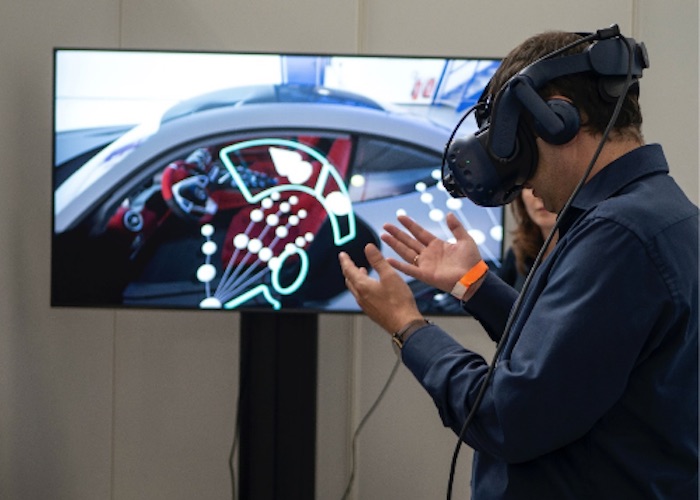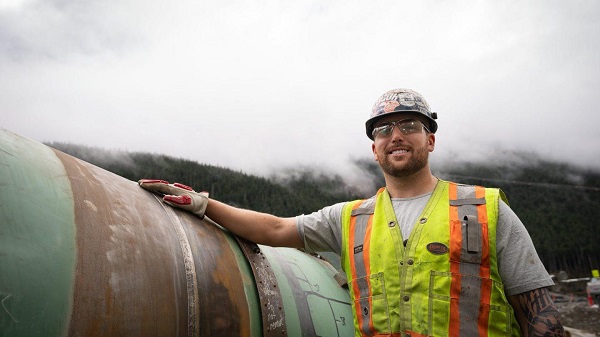Also Interesting
The Rise of Virtual Entertainment: Exploring the Future of Online Gaming

Different types of online games used to be very popular. Today, online games continue to provide entertainment and have an audience, although it seems that the market for such games has not changed much in recent times. However, the whole environment has changed, and huge competition has grown from mobile apps and consoles, as well as advanced and highly complex games with diverse scenarios and engaging stories.
Entertainment, understood in this way, is offered to us today by online casinos, which, with their improvements, are and will be the ones that will influence and determine the future of gambling. Find out from this article everything you need to know about the rise of virtual entertainment.
What is the future of online gambling?
The gambling industry has witnessed drastic changes over the years. In the past, people had to travel to the nearest physical casino and gamble there. The advent of mobile technology has been and continues to be the driving force that has helped the gambling industry evolve, and nowadays, an increasing percentage of gamblers would rather turn to a real money online casino than an old-fashioned land-based one.
Live dealer games are a new way to experience online gambling, and companies like Evolution and Pragmatic Play are driving this forward. They provide improved game performance, realistic experience, and human interaction. Live dealer games have been around for a while but have been limited to land-based casinos until around 2015-2018. Since then, the technology behind streaming has improved so much that the live casino segment has become a necessary part of any online casino brand out there.
Virtual reality will provide a more immersive gaming experience
Virtual reality is still in its early stages, but it’s already changing the way people experience online gambling. The customer experience will be completely different from what it was before. Virtual reality casino games are one of the most popular types of online gambling.
They are immersive and interactive, meaning players feel like they are living a real casino experience without leaving their homes. As VR technology continues to improve and become more accessible, it will change the way people play online and make them more willing to try new things.
Cloud gaming greatly enhances the mobile gaming experience
When it comes to gaming, true enthusiasts don’t want to miss out on the joy of playing anywhere. That means they want to be able to play anytime, anywhere. Until today it was always necessary to be in a certain place to be able to access your favourite games while playing online. This fact has not gone unnoticed by game developers, who are very interested in providing users with a unique and location-independent gaming experience.
This is also why the topic of cloud gaming is becoming more and more important. Thanks to the “cloud” server, it is no longer necessary to buy a physical game. However, the basic prerequisite is that the user has signed up for a subscription with the relevant provider. In this way, you can access your desired games online simply and easily. All titles are managed through the appropriate cloud.
The future of online gaming is with mobile phones
Month by month, more and more people prefer to play with the help of the mobile phone, and because the screens are more and more excellent with colours and dexterity. Within ten years, almost 90% of players will use the new mobile phones to play online casinos.
Online gaming has reached an unprecedented level of popularity, with millions of players logging in every day to enjoy their favourite games. With the evolution of technology, online games are becoming more and more realistic and immersive, offering a gaming experience that is more and more similar to that of the real world.
Artificial intelligence
Artificial intelligence is also becoming increasingly important in online gaming. With the help of artificial intelligence, games can become smarter and more responsive, creating a more personalized gaming experience for each player. For example, AI algorithms can be used to create virtual characters with unique personalities or to procedurally generate game worlds. In addition, AI can be used to create fairer gaming systems and prevent cheating.

Blockchain sites
Blockchain is a technology that allows you to create immutable and distributed digital ledgers. This technology is becoming increasingly popular in online gaming as it allows games to be built on smart contracts and use cryptocurrencies for payment. In addition, blockchain enables the creation of decentralized marketplaces where players can trade virtual items and currency. Blockchain is expected to become increasingly prominent in
online gaming in the future.

Conclusion
Online gambling is one of the most profitable industries in the world. Gambling has been around for centuries and rep It’s a huge and ever-evolving industry, but the advent of online gambling has changed the way we bet and play over the past few decades. The growth of online gambling has been marked by the introduction of new technologies and innovations.
Online gambling is expected to grow rapidly in the coming years with the introduction of new technologies and innovations such as blockchain, augmented reality, and artificial intelligence.
Also Interesting
How to Deposit and Withdraw in CAD at Sol Casino: A Guide for Canadian Players

When choosing an online casino, Canadian players not only look for exciting games and bonuses but also for easy and secure payment methods in Canadian dollars (CAD). Sol Casino understands this need and has created a streamlined system for deposits and withdrawals that suits players across Canada.
This guide walks you through how to fund your account, cash out your winnings, and which methods are most efficient and convenient.
Why Use CAD at Sol Casino?
Sol Casino supports transactions directly in Canadian dollars, which is a huge advantage. This means:
No currency conversion fees
Simplified banking
Faster transactions
Better tracking of your gambling budget
For Canadian players, avoiding unnecessary fees and delays is crucial. Sol Casino ensures you can deposit and withdraw in your local currency without any added complications.
How to Deposit Funds at Sol Casino (Step by Step)
Funding your Sol Casino account is simple. Follow these steps to make a deposit:
1. Log in to your Sol Casino account.
2. Go to the Cashier/Deposit section.
3. Choose your preferred payment method.
4. Enter the amount you wish to deposit (minimum deposit usually starts at $20 CAD).
5. Follow the prompts to complete the transaction.
Most deposits are instant, meaning you can start playing right away.
Popular Deposit Methods for Canadians
Sol Casino offers a variety of trusted options tailored for Canadian players:
Interac e-Transfer: A go-to choice in Canada, easy to use and highly secure.
MuchBetter: A modern e-wallet app offering fast, private transfers.
ecoPayz: Another reliable e-wallet widely used in Canada.
Visa/Mastercard: Traditional and familiar for most users.
Cryptocurrencies: Includes Bitcoin, Ethereum, and more for added privacy.
Each method is secure and designed to fit your lifestyle and preferences.
How to Withdraw Winnings in CAD
Cashing out your winnings is just as easy. Here’s how to request a withdrawal:
1. Go to your account dashboard and select Withdraw.
2. Choose the same method used for depositing (if possible).
3. Enter the amount you want to withdraw.
4. Submit your request and wait for confirmation.
Before processing your first withdrawal, Sol Casino may ask for ID verification to comply with KYC (Know Your Customer) rules. This is standard for any legitimate casino and helps protect your account from fraud.
Withdrawal Processing Time
Sol Casino processes withdrawal requests quickly. Here’s a general idea of how long it may take:
E-wallets (MuchBetter, ecoPayz): 0–24 hours
Cryptocurrency: 1–12 hours (depending on network speed)
Interac: 1–2 business days
Cards (Visa/Mastercard): Up to 3–5 business days
Once your identity is verified, future withdrawals are often processed faster.
Tips for Smooth Transactions
Verify your account early to avoid delays during your first withdrawal.
Use the same method for deposit and withdrawal whenever possible.
Set responsible limits to manage your gambling activity.
Watch for promotions offering cashback or deposit bonuses for specific payment methods.
Sol Casino also sends notifications and email confirmations for each transaction, adding transparency to the process.
Customer Support for Payment Issues
If you run into any trouble while depositing or withdrawing, Sol Casino has a 24/7 support team ready to help. You can use:
Live chat for immediate assistance
Email support for more detailed inquiries
FAQ section with answers to common questions about payments
All services are available in English and French, making support accessible to all Canadian users.
Conclusion: Fast, Flexible, and Canadian-Friendly Banking
Sol Casino has built a payment system that respects Canadian needs. With support for CAD, a variety of local methods like Interac and MuchBetter, and fast withdrawals, it provides a hassle-free banking experience. Whether you’re playing for fun or aiming for big wins, Sol Casino ensures your money is handled safely, securely, and efficiently.
Also Interesting
Actuators in Industrial Automation: How They Improve Efficiency

In the quest for enhanced productivity and reduced operational costs, many industries face challenges in optimizing their automation systems. Integrating advanced technologies, such as actuators, alleviates these issues by automating processes and minimizing manual intervention. Leveraging the capabilities of an actuator allows businesses to streamline operations and achieve higher efficiency.
Industrial automation continues to evolve, with a focus on precision and reliability. As of 2025, advancements in automation technologies are projected to increase productivity by up to 30% in various sectors, according to the International Federation of Robotics report. This growth is attributed to the strategic use of components like the actuator, pivotal in enhancing operational efficiency.
Actuators: What are They?
Actuators are mechanical devices that convert energy into motion and enable precise control over various industrial processes. They are categorized into:
Electric
Hydraulic
Linear
Each type offers unique advantages (e.g., precision, force, speed) for different applications. Understanding what actuators are and how they work is crucial for application in industrial settings.
The question “What are actuators?” is often followed by “What is the work of an actuator?” These devices perform tasks that require movement or force (e.g., opening valves, moving parts in machinery, or adjusting positions in assembly lines). They are integral to systems requiring precise control, making them a cornerstone of modern automation.
The Role of Actuators in Industrial Automation
Actuators are the backbone of industrial automation, enabling precise control and integration across systems. Their ability to convert energy into motion makes them indispensable for optimizing processes, reducing costs, and improving productivity.
In control systems, they work with sensors to enable real-time adjustments. For example, in food processing plants, electric motors adjust conveyor speeds, ensuring consistent packaging and reducing waste. It minimizes downtime and saves businesses time and money.
In robotics, devices like the actuator arm deliver high precision. In automotive assembly lines, linear drives allow robotic arms to weld or paint with millimeter accuracy, reducing rework and enhancing product quality.
Beyond robotics, these motors streamline machinery operations. In the oil and gas industry, hydraulic motors control pipeline valves, eliminating manual intervention in hazardous environments and improving safety.
How Actuators Improve Operational Efficiency
Here is how actuators enhance industrial operation:
They offer precise control over movements, essential in applications requiring high accuracy (e.g., manufacturing, robotics). It reduces errors and improves product quality. For example, in CNC machining, linear actuators ensure cuts are made with exactness, resulting in parts that meet precise specifications.
They speed up production cycles, allowing for higher output in less time. It is beneficial in assembly lines where actuator assembly and actuator adapter components are used to streamline processes. In automotive manufacturing, they can quickly position and secure parts, reducing assembly time.
They minimize the need for human intervention, reducing the risk of errors and accidents. It improves safety and increases productivity by allowing workers to focus on more complex tasks.
In environments where repetitive tasks are common, motors automate these processes, freeing up personnel for strategic roles.
Applications of Actuators in Various Industries
Actuators are used across different industries to enhance efficiency and productivity.
Manufacturing. Linear drives are used in machinery to ensure precise movements and consistent product quality. They are integral in assembly lines, where they automate tasks such as positioning and lifting components. For instance, in electronics manufacturing, actuators precisely place components on circuit boards, ensuring each product meets quality standards.
Oil and gas. Here, hydraulic motors are used for valve control due to their high force capabilities, necessary for handling heavy loads.
Food processing. In this niche, electric motors are preferred for their cleanliness and low maintenance, ensuring production lines remain hygienic and efficient. They are used in machinery requiring precise control (e.g., filling and packaging systems).
How to Choose the Right Industrial Actuator
Evaluate several factors for optimal compatibility with your applications:
Determine whether your application demands linear, rotary, or oscillatory motion. For example, linear motors are ideal for tasks requiring straight-line movement, such as positioning components in manufacturing lines.
Assess the load capacity and force requirements of your application. Heavy-duty applications, like those in the oil and gas sector, often require hydraulic actuators due to their high force capabilities.
Evaluate the operating environment, considering factors such as temperature, humidity, dust, and corrosive conditions. Ensure the actuator’s materials and design are suitable for these conditions by checking IP ratings, temperature limits, and corrosion resistance.
Ensure the motor is compatible with existing control systems. It includes considering manual, mechanical, electrical, or computer-based control options to ensure integration.
Consider safety factors (e.g., emergency stop mechanisms and fail-safe designs), especially in critical applications like vehicle automation.
Actuators are essential in industrial automation, delivering precision, speed, and efficiency to optimize operations across sectors. Integrating the right motors will allow businesses to reduce costs, enhance productivity, and maintain a competitive edge in an automated landscape.
-

 Business1 day ago
Business1 day agoTrump: China’s tariffs to “come down substantially” after negotiations with Xi
-

 Business1 day ago
Business1 day agoTrump considers $5K bonus for moms to increase birthrate
-

 Business2 days ago
Business2 days agoHudson’s Bay Bid Raises Red Flags Over Foreign Influence
-

 2025 Federal Election2 days ago
2025 Federal Election2 days agoCanada’s pipeline builders ready to get to work
-

 2025 Federal Election2 days ago
2025 Federal Election2 days agoMark Carney Wants You to Forget He Clearly Opposes the Development and Export of Canada’s Natural Resources
-

 International2 days ago
International2 days agoNew York Times publishes chilling new justification for assisted suicide
-

 Business22 hours ago
Business22 hours agoChinese firm unveils palm-based biometric ID payments, sparking fresh privacy concerns
-

 2025 Federal Election1 day ago
2025 Federal Election1 day agoCanada’s press tries to turn the gender debate into a non-issue, pretend it’s not happening





